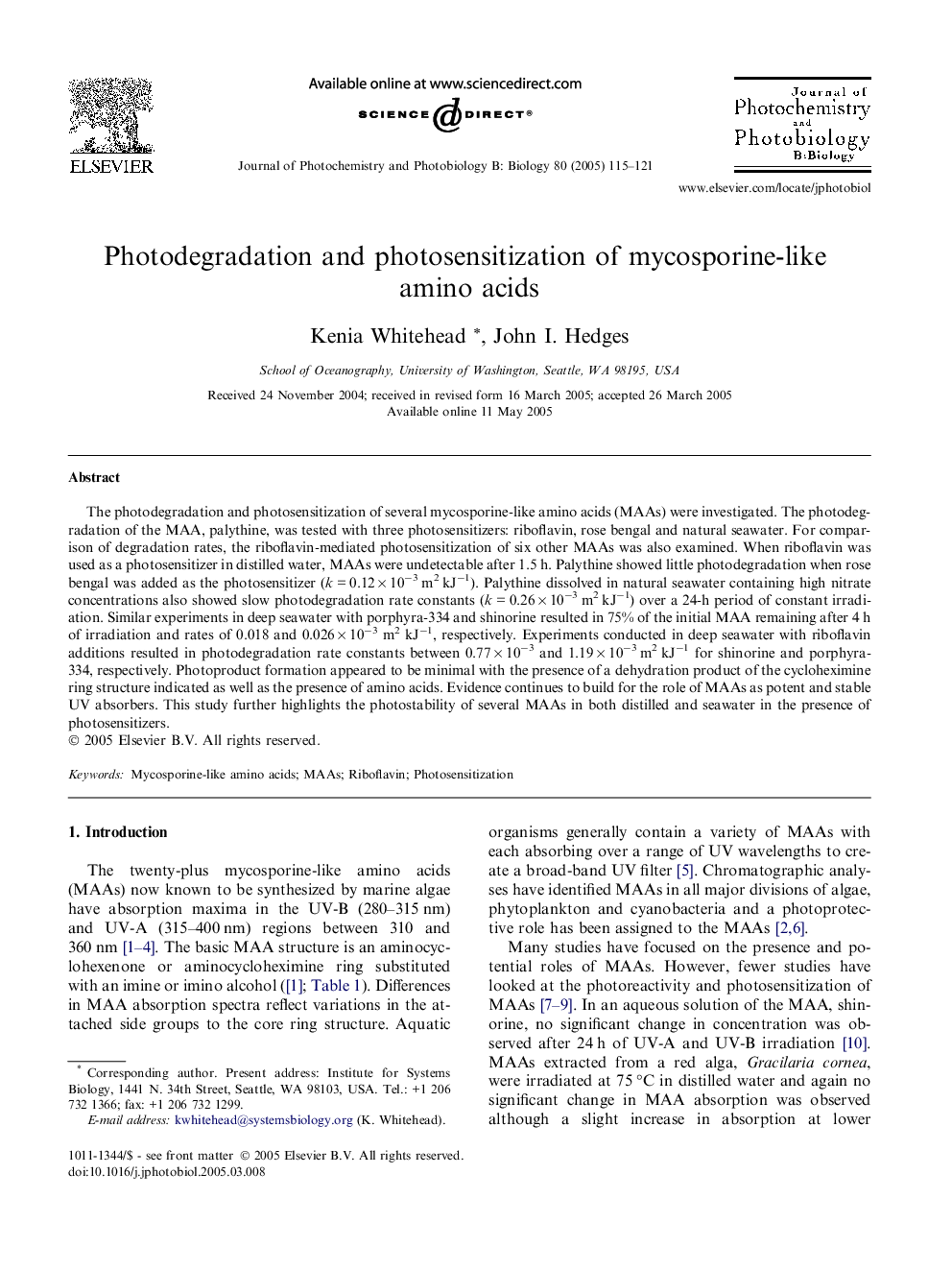| Article ID | Journal | Published Year | Pages | File Type |
|---|---|---|---|---|
| 9607029 | Journal of Photochemistry and Photobiology B: Biology | 2005 | 7 Pages |
Abstract
The photodegradation and photosensitization of several mycosporine-like amino acids (MAAs) were investigated. The photodegradation of the MAA, palythine, was tested with three photosensitizers: riboflavin, rose bengal and natural seawater. For comparison of degradation rates, the riboflavin-mediated photosensitization of six other MAAs was also examined. When riboflavin was used as a photosensitizer in distilled water, MAAs were undetectable after 1.5 h. Palythine showed little photodegradation when rose bengal was added as the photosensitizer (k = 0.12 Ã 10â3 m2 kJâ1). Palythine dissolved in natural seawater containing high nitrate concentrations also showed slow photodegradation rate constants (k = 0.26 Ã 10â3 m2 kJâ1) over a 24-h period of constant irradiation. Similar experiments in deep seawater with porphyra-334 and shinorine resulted in 75% of the initial MAA remaining after 4 h of irradiation and rates of 0.018 and 0.026 Ã 10â3 m2 kJâ1, respectively. Experiments conducted in deep seawater with riboflavin additions resulted in photodegradation rate constants between 0.77 Ã 10â3 and 1.19 Ã 10â3 m2 kJâ1 for shinorine and porphyra-334, respectively. Photoproduct formation appeared to be minimal with the presence of a dehydration product of the cycloheximine ring structure indicated as well as the presence of amino acids. Evidence continues to build for the role of MAAs as potent and stable UV absorbers. This study further highlights the photostability of several MAAs in both distilled and seawater in the presence of photosensitizers.
Related Topics
Physical Sciences and Engineering
Chemical Engineering
Bioengineering
Authors
Kenia Whitehead, John I. Hedges,
